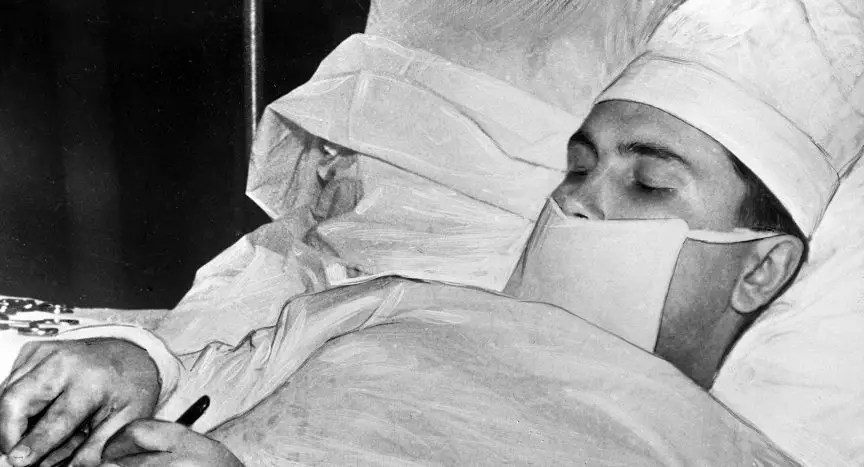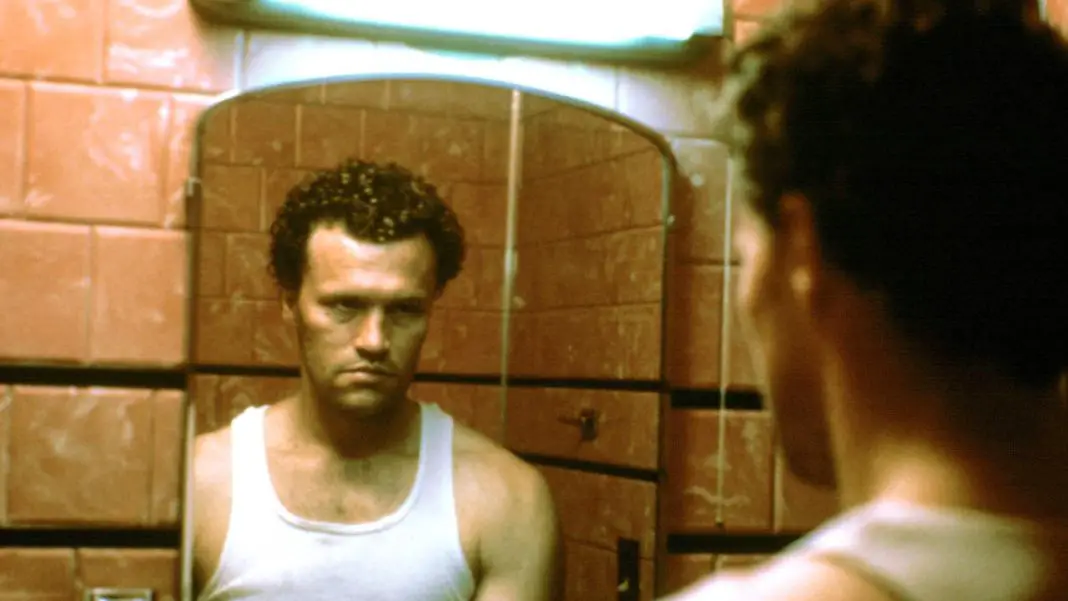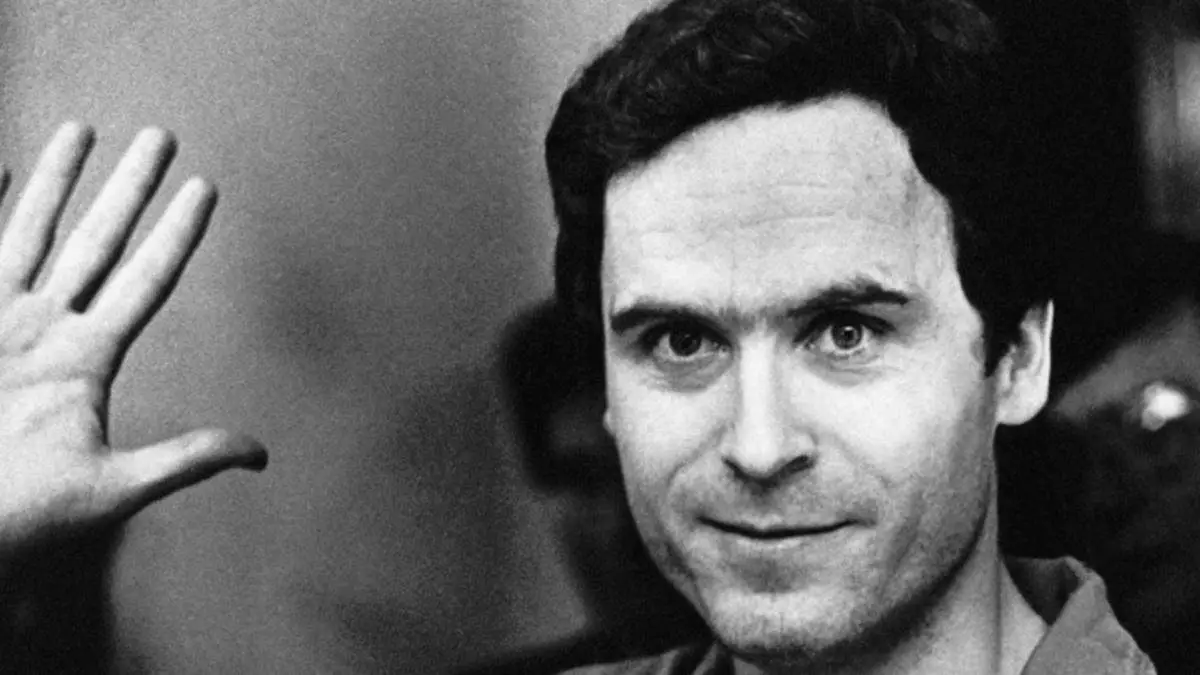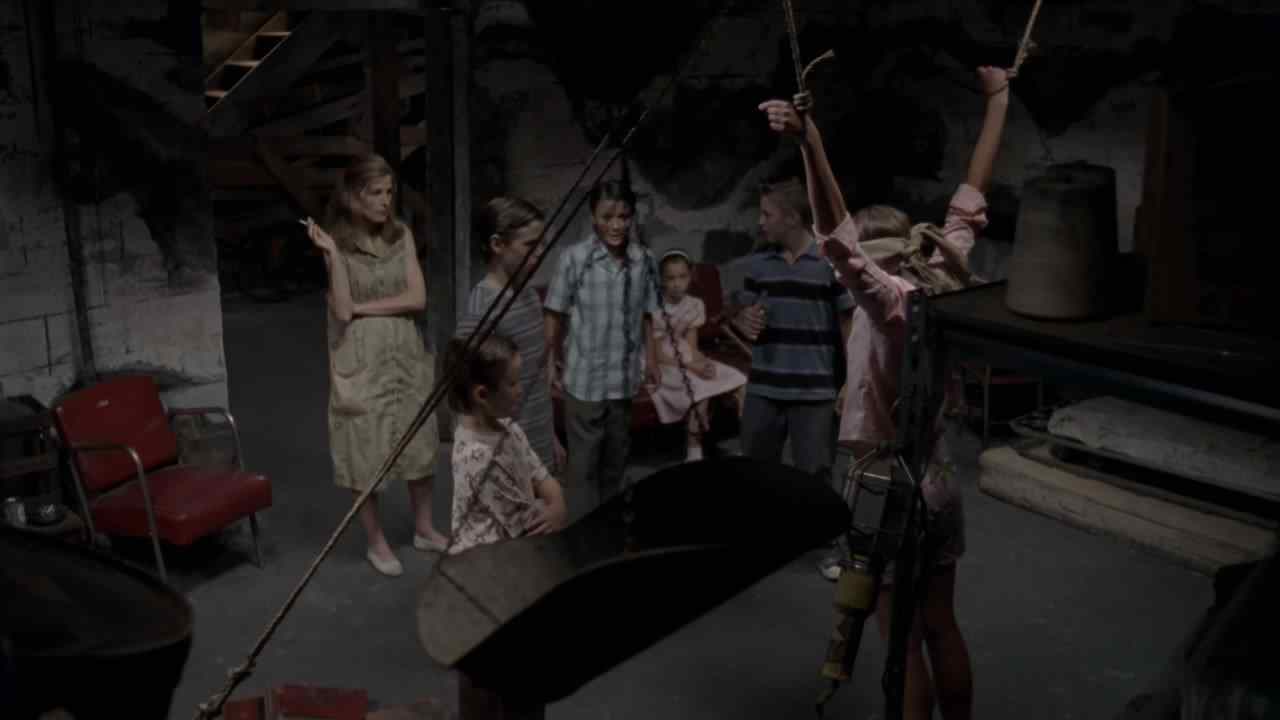“On the morning of April 29, 1961 I did not feel well. The symptoms noted were weakness, general malaise and, later, nasuea. Within a few hours, pain arose in the upper portion of the abdomen, which soon shifted to the right lower quadrant. Body temperature rose to 37.4°C. It was clearly a case of appendicitis…The only solution was to operate on myself.” -L.I. Rogozov First Hand Account (1964).
History is rich with harrowing stories of survival that are almost too unbelievable to be true. There is the voyage of 1819, lead by Owen Chase, that resulted in the crew turning to cannibalism for survival. And the 1999 story of Dr. Anna Bågenholm, who survived being trapped beneath nearly 8 inches of ice for 40 minutes, thanks to a pocket of air. Or Serbian flight attendant Vesna Vulović, who was the lone survivor of a plane explosion in 1972. These stories, and many others, despite how phenomenal they are, somehow dim in comparison to Dr. Leonid Rogozov.
See Also: Is Murder by Numbers Based on a True Story?
When then 26 year old Leonid Rogozov embarked on an expedition to the Antartic in 1960, he was blissfully unaware of the history he would make. Born in eastern Siberia, Rogozov interrupted his training as a surgeon to be a a part of the sixth Soviet Antarctic Expedition. It consisted of 12 men and involved building a new base at the Schirmacher Oasis. By February 1961, the Cold War was in full swing. So, with their mission complete, the team decided settle down to ride out the rough winter months in the comfort of the station until a plane or ship was able to retrieve them. But by the end of April, disaster struck. The now 27 year old Rogozov was experiencing all the classic symptoms of appendicitis, a condition where the appendix becomes enflamed and filled with pus. The condition can lead the appendix to burst if left untreated.
The situation was grim; Rogozov’s condition was slowly but surely getting worse, several snow storms were preventing the team from leaving and on top of all of that? Rogozov was the station’s only doctor. An excerpt from his diary reads: “It seems that I have appendicitis. I am keeping quiet about it, even smiling. Why frighten my friends? Who could be of help? A polar explorer’s only encounter with medicine is likely to have been in a dentist’s chair…I did not sleep at all last night. It hurts like the devil! A snowstorm whipping through my soul, wailing like a hundred jackals. Still no obvious symptoms that perforation is imminent, but an oppressive feeling of foreboding hangs over me…This is it…I have to think through the only possible way out: to operate on myself…It’s almost impossible…but I can’t just fold my arms and give up.”
Even though Rogozov had made up his mind, he could not operate as quickly as he would have liked. This wasn’t due to his condition, rather it was due to him needing permission to actually go through with it. Fearing Rogozov’s death would result in negative publicity for the Soviet Antarctic program, the team actually had to wait to get Moscow’s blessing for the operation to go forward. As soon as they had it, the good doctor wasted no time prepping a team to assist him. This team consisted of a driver, a meteorologist, and a third scientist to act as a stand-in, in case either of the other two men had to leave the room to vomit.
Also See: This Sinister True Story is Reminiscent of Don’t Breathe
Rogozov gave his team a basic run down of how to properly disinfect themselves, how to sterilize the instruments, directed them to prop him up in an almost sitting position, set up a mirror just below his right hip and shined a table lamp on where his swollen abdomen would be. With his bacterial clock counting down, Rogozov got comfortable and injected himself with a local anesthetic before making the first incision.

Things didn’t go smoothly at first. Finding the mirror’s inverted image disorienting he accidently sliced his lower intestine which he quickly had to suture. So he abandoned the mirror’s use entirely and resorted to working by feel. As the surgery carried on Rogozov grew weaker. His diary reads: “I worked without gloves. It was hard to see. The mirror helps, but it also hinders—after all, it’s showing things backwards. I work mainly by touch. The bleeding is quite heavy, but I take my time—I try to work surely. Opening the peritoneum, I injured the blind gut and had to sew it up. Suddenly it flashed through my mind: there are more injuries here and I didn’t notice them…I grow weaker and weaker, my head starts to spin. Every 4-5 minutes I rest for 20-25 seconds. Finally, here it is, the cursed appendage! With horror I notice the dark stain at its base. That means just a day longer and it would have burst and– At the worst moment of removing the appendix I flagged: my heart seized up and noticeably slowed; my hands felt like rubber. Well, I thought, it’s going to end badly. And all that was left was removing the appendix… And then I realized that, basically, I was already saved.”
All in all, the surgery took approximately two hours. At first it was up in the air if the operation was a success. The days following his condition were described as poor, his temperature remained high and he rarely left his bed. But two weeks after his self-surgery, on a heavy antibiotic regimen, Rogozov was able and surprisingly eager to return to his regular duties at the station. The incident resulted in a change of policy, and thereafter, extensive health checks were mandatory for personnel to be deployed on such expeditions.
In 1961 Leonid Rogozov was awarded the Order of the Red Banner of Labour. From 1986 until his death in 2000 of lung cancer, he served as the head of the surgery department of Saint Petersburg Research Institute for Tubercular Pulmonology.
He would later look back on the surgery at the base Schirmacher Oasis and referred to it as “a job like any other.”
Research Sources:
BBC’s: The Man Who Cut Out His Own Appendix
All That’s Interesting: Leonid Rogozov, The Soviet Doctor Who Performed Emergency Surgery On Himself
Flashback Friday: Self-surgery — Not for the Faint of Heart
L.I. Rogozov (1964). “Self Operation” (PDF). Soviet Antarctic Expedition Information Bulletin







